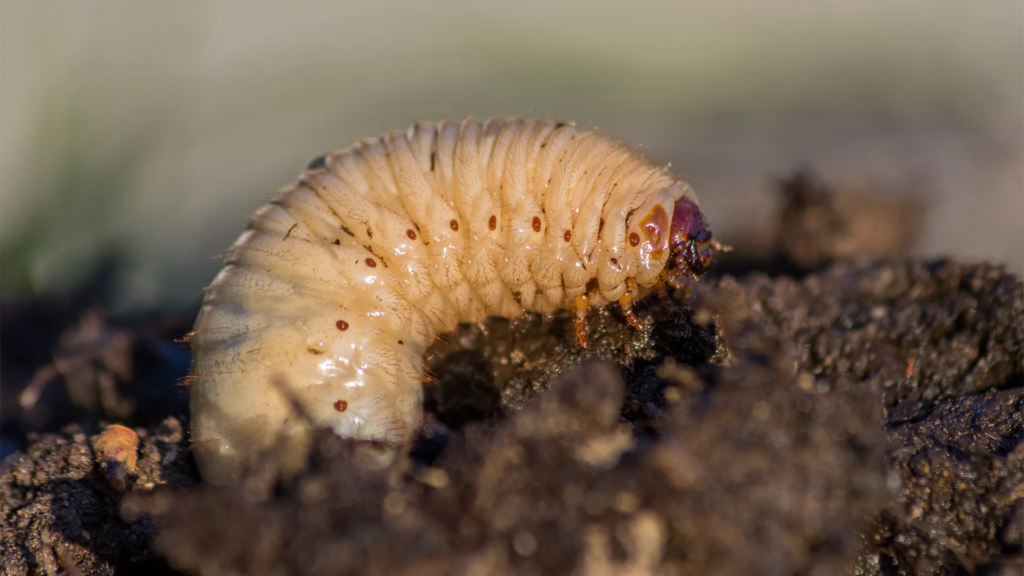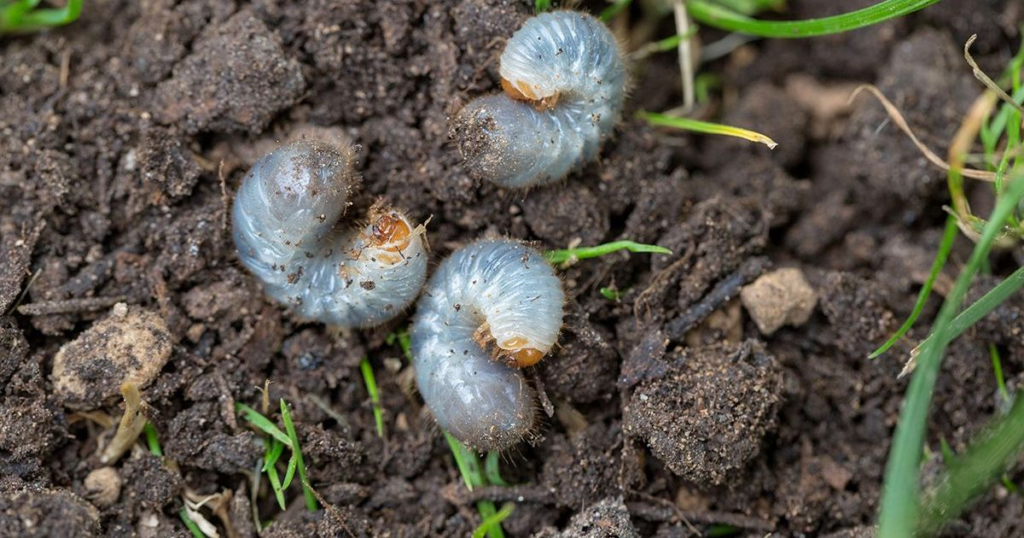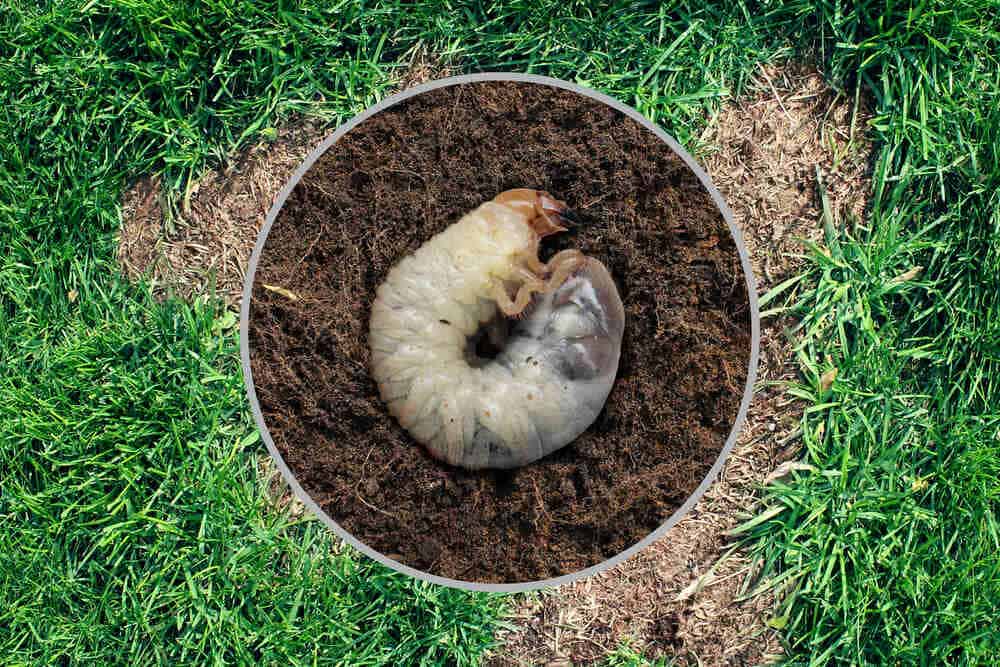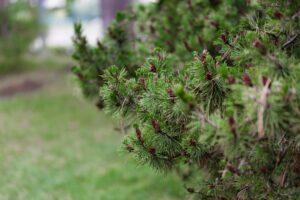How to Get Rid of Grubs: The Complete Guide to Lawn Protection
Maintaining a lush, healthy lawn requires vigilance against various pests, and grubs rank among the most destructive underground invaders you might encounter. These C-shaped larvae can quickly transform your vibrant turf into patches of brown, lifeless grass if left unchecked. Whether you’ve already spotted signs of grub damage or want to take preventative measures, this comprehensive guide will equip you with everything you need to know about identifying, preventing, and eliminating grubs from your lawn.
Understanding Lawn Grubs: Know Your Enemy
Before diving into treatment options, it’s crucial to understand what grubs are and how they affect your lawn. Grubs are the larval stage of various beetles, including Japanese beetles, June beetles, chafers, and more. These white, C-shaped larvae live beneath your soil surface, feeding on grass roots and causing significant damage to your lawn.
What Are Grubs?
Grubs are the immature form of several species of beetles. They have cream-colored bodies with brown heads and typically measure between ½ to 1 inch in length. Their distinctive C-shape makes them easily identifiable when you dig into affected areas of your lawn.
The most common types of grubs found in U.S. lawns include:
- Japanese beetle larvae
- European chafer larvae
- June beetle larvae
- Oriental beetle larvae
- Asiatic garden beetle larvae
- Black turfgrass ataenius larvae
These different species have slightly varied life cycles, but all spend part of their development as underground grubs that feed on grassroots.
The Grub Life Cycle
Understanding the life cycle of grubs is essential for effective control. Most lawn-damaging grubs follow a similar pattern:
- Adult Stage (Summer): Adult beetles emerge from the soil, mate, and lay eggs in your lawn.
- Egg Stage (Summer): Eggs are deposited in the soil and hatch within 2-3 weeks.
- Larval Stage (Fall through Spring): Newly hatched grubs feed on grassroots during fall, overwinter deeper in the soil, then resume feeding in spring.
- Pupal Stage (Late Spring): Grubs transform into pupae before emerging as adult beetles.
The cycle then repeats, with the most significant lawn damage typically occurring in late summer through fall and again in spring when grubs actively feed on roots.
Identifying a Grub Problem in Your Lawn
Early detection is key to preventing extensive damage. Here’s how you can determine if grubs are affecting your lawn:
Visual Symptoms of Grub Damage
- Brown patches: Areas of dying grass that appear suddenly, especially during late summer and early fall
- Spongy turf: Affected areas feel soft and spongy when walked on
- Easy to pull grass: Damaged grass can be easily pulled up like a loose carpet, as the roots have been eaten
- Increased animal activity: More birds, skunks, raccoons, or moles digging in your lawn (they feed on grubs)
Conducting a Grub Count Test
To confirm a grub infestation and determine if treatment is necessary, perform this simple test:
- Cut a 1-square-foot section of your lawn about 2-3 inches deep
- Lift the section and examine the soil and roots
- Count the number of grubs you find
The following table outlines action thresholds based on your grub count:
| Number of Grubs per Square Foot | Threat Level | Recommended Action |
|---|---|---|
| 0-5 | Low | Monitor lawn, no immediate treatment needed |
| 6-9 | Moderate | Consider preventative treatment, especially for high-value lawns |
| 10+ | High | Immediate curative treatment recommended |
| 20+ | Severe | Aggressive treatment needed, lawn recovery may be required |
According to the United States Department of Agriculture (USDA), a healthy lawn can typically withstand low grub populations without showing significant damage. However, factors like drought stress, grass type, and soil quality can influence how well your lawn tolerates grubs. For more information on grub threshold levels, visit the USDA National Institute of Food and Agriculture website.
Prevention: The First Line of Defense
As with most lawn issues, prevention is more effective and less costly than dealing with an established infestation. Here are strategies to prevent grubs from damaging your lawn:

Maintain a Healthy Lawn
A robust, well-maintained lawn is naturally more resistant to grub damage. Follow these best practices:
- Proper mowing height: Keep your grass at the higher end of the recommended height for your species (typically 2.5-4 inches)
- Regular watering: Deep, infrequent watering encourages deep root growth
- Aeration: Annual aeration improves soil health and reduces compaction
- Fertilization: Follow a balanced fertilization schedule appropriate for your grass type
Strategic Watering Practices
Adult beetles prefer to lay eggs in moist soil. You can disrupt their egg-laying cycle by adjusting your watering schedule:
- During peak beetle activity (usually June-July): Keep your lawn slightly drier to discourage egg-laying
- After egg-laying season: Resume normal watering to support grass recovery and growth
Preventative Treatments
For lawns with a history of grub problems or in areas where grubs are common, preventative treatments can be applied:
| Treatment Type | Active Ingredient | Application Timing | Duration of Protection |
|---|---|---|---|
| Preventative Insecticides | Imidacloprid, Chlorantraniliprole, Thiamethoxam | Late spring to early summer (before eggs hatch) | 2-5 months |
| Beneficial Nematodes | Heterorhabditis bacteriophora | Spring through fall (soil temp above 60°F) | 2-4 weeks |
| Milky Spore | Paenibacillus popilliae | Any season (most effective in warm soil) | 1-3 years once established |
The EPA provides guidance on the safe use of pesticides and biological controls. For more information on environmentally responsible pest management, visit the EPA Integrated Pest Management page.
Organic Grub Control Methods
If you prefer to avoid chemical treatments, several organic approaches can help manage grub populations:
Beneficial Nematodes
Beneficial nematodes are microscopic organisms that parasitize and kill grubs. They’re completely safe for humans, pets, and beneficial insects.
How to apply:
- Purchase fresh nematodes from a reputable supplier
- Mix with water according to package directions
- Apply to moist soil in early morning or evening (nematodes are sensitive to UV light)
- Keep soil moist for at least two weeks after application
Milky Spore
Milky spore is a naturally occurring bacteria that causes disease in Japanese beetle grubs specifically. Once established, it can provide long-term control:
How to apply:
- Purchase milky spore powder or granules
- Apply according to label directions (typically in a grid pattern)
- Water lightly after application
- Be patient—it can take 1-3 years to become fully established
Beneficial Birds and Wildlife
Encouraging natural predators can help keep grub populations under control:
- Install bird feeders and baths to attract grub-eating birds like robins and starlings
- Consider installing bat houses (bats eat adult beetles)
- Tolerate beneficial digging animals like toads that consume grubs
Chemical Control Options
When organic methods aren’t sufficient or when you’re dealing with a severe infestation, chemical controls may be necessary:

Curative Treatments
Curative treatments are designed to kill existing grubs:
| Product Type | Common Active Ingredients | Best Application Time | Notes |
|---|---|---|---|
| Carbaryl-based | Carbaryl | When grubs are active and near surface | Fast-acting but shorter residual |
| Trichlorfon-based | Trichlorfon | When grubs are active and near surface | Quick knockdown, limited residual |
For curative treatments to be effective:
- Apply when grubs are actively feeding near the soil surface (typically early fall or spring)
- Water thoroughly after application (¼ to ½ inch) to move the product into the root zone
- Follow all label directions precisely
Preventative Treatments
Preventative insecticides should be applied before grubs hatch:
- Neonicotinoids (imidacloprid, clothianidin, thiamethoxam): Apply in May through July, before eggs hatch
- Anthranilic diamides (chlorantraniliprole): Can be applied earlier (April to June) due to longer residual activity
The Environmental Protection Agency (EPA) regulates pesticides used for grub control. For the latest information on approved products and their proper use, visit the EPA Pesticide Product and Label System.
Application Timing: When to Treat for Grubs
Timing is crucial for effective grub control. The following table outlines the optimal timing for different control methods based on the grub life cycle:
| Month | Grub Life Stage | Recommended Actions |
|---|---|---|
| January-March | Overwintering larvae (deeper in soil) | Plan your control strategy for the coming season |
| April-May | Larvae moving upward, feeding resumes | Apply chlorantraniliprole if using as preventative; curative treatments if spring damage appears |
| June-July | Pupation and adult emergence | Apply preventative treatments (except chlorantraniliprole); manage adult beetles |
| August | Egg-laying and hatching | Too late for preventatives; monitor for early damage |
| September-October | Young larvae actively feeding | Apply curative treatments if threshold levels exceeded |
| November-December | Larvae preparing to overwinter | Limited treatment options; plan for next season |
The United States Department of Agriculture provides resources on pest management timing. Visit the USDA Agricultural Research Service website for research-based information on insect pest management.
Post-Treatment Lawn Recovery
After successfully controlling grubs, your lawn may need help to recover from the damage:
Assessing the Damage
- Light damage: Small patches that may fill in on their own with proper care
- Moderate damage: Larger areas requiring overseeding
- Severe damage: Extensive dead areas that may need complete renovation
Repair Strategies
For damaged areas:
- Remove dead grass: Rake away dead turf to expose soil
- Loosen soil: Lightly loosen the top ¼ inch of soil
- Apply seed: Use a grass seed blend appropriate for your region
- Top dress: Cover seeds lightly with compost or topsoil
- Water: Keep the seeded area consistently moist until established
Long-Term Recovery Care
- Adjust soil pH if needed (most grasses prefer 6.0-7.0)
- Implement a balanced fertilization program based on soil test results
- Consider core aeration to reduce compaction and improve root growth
- Establish proper mowing and watering practices to strengthen the lawn
Regional Considerations for Grub Control in the U.S.
Grub species and treatment approaches vary across different regions of the United States:
Northeast and Midwest
- Common species: Japanese beetles, European chafers, Oriental beetles
- Key considerations: Shorter growing seasons; preventative treatments should be applied by early July
- Regional challenges: Cold winters can push grub activity later in spring; multiple species often present simultaneously
Southeast
- Common species: Japanese beetles, June beetles, green June beetles
- Key considerations: Longer active season; multiple generations possible in some areas
- Regional challenges: Warm, humid conditions can accelerate grub development; monitor throughout extended seasons
West and Southwest
- Common species: June beetles, masked chafers
- Key considerations: Irrigation practices heavily influence grub activity in arid regions
- Regional challenges: Drought stress can amplify grub damage; focus on lawn resilience
Pacific Northwest
- Common species: European chafers, June beetles
- Key considerations: Cool, wet conditions may require adjusted timing for treatments
- Regional challenges: Persistent moisture can support continuous grub activity; drainage improvements may help
For region-specific guidance, the Cooperative Extension Service in your state can provide localized information. Find your local extension office through the USDA National Institute of Food and Agriculture website.
Integrated Pest Management (IPM) for Sustainable Grub Control
Integrated Pest Management offers a comprehensive approach to grub control that minimizes environmental impact while effectively managing pest populations:

The Five Steps of IPM for Grub Control
- Identification and monitoring: Correctly identify the specific grub species and monitor population levels
- Setting action thresholds: Determine the level at which treatment becomes necessary
- Prevention: Implement cultural practices that discourage grub infestations
- Intervention: Use the least toxic effective treatment when thresholds are exceeded
- Evaluation: Assess the effectiveness of your control methods and adjust as needed
Benefits of an IPM Approach
- Reduces unnecessary pesticide applications
- Preserves beneficial organisms in your lawn ecosystem
- Provides more sustainable long-term control
- Typically more cost-effective over time
The EPA promotes IPM as the preferred approach to pest management. Learn more about implementing IPM in your lawn care routine at the EPA Integrated Pest Management website.
Special Considerations for Different Lawn Types
Your grass type affects both susceptibility to grub damage and recovery potential:
Cool-Season Grasses (Northern U.S.)
- Kentucky Bluegrass: Highly susceptible to grub damage; recovers through rhizomes if damage isn’t severe
- Tall Fescue: More grub-resistant due to deeper root systems; slower to recover through seeding
- Perennial Ryegrass: Moderately susceptible; no spreading capability, requires overseeding to recover
Warm-Season Grasses (Southern U.S.)
- Bermudagrass: Generally more grub-resistant; excellent recovery through stolons and rhizomes
- Zoysiagrass: Moderate susceptibility; slower growth means longer recovery periods
- St. Augustinegrass: Varies in susceptibility; can recover well during active growing season
For grass-specific management recommendations, the National Turfgrass Evaluation Program provides research-based information. Visit the National Turfgrass Evaluation Program website for comparative data on turfgrass performance.
The Economic Impact of Grub Control
Investing in proper grub management can save substantial costs in the long run:
Cost Comparison of Different Approaches
| Treatment Approach | Initial Cost | Long-term Cost (3 years) | Environmental Impact | Effectiveness |
|---|---|---|---|---|
| Prevention Only | $$ | $ | Low | Moderate |
| Curative Only | $ | $$$ | Moderate-High | Variable |
| Integrated IPM | $$ | $$ | Low-Moderate | High |
| No Management | $0 | $$$$ | Low | Poor (potential lawn replacement) |
Return on Investment Considerations
- A preventative application costing $50-100 can prevent damage requiring $500-1,000 in lawn renovation
- Biological controls like milky spore have higher upfront costs but provide longer protection
- Professional lawn service annual contracts typically include grub prevention, adding $100-150 to annual costs
Professional vs. DIY Grub Control
Deciding whether to tackle grub control yourself or hire a professional depends on several factors:
When to Consider DIY Treatment
- Your lawn is smaller than 5,000 square feet
- You have proper equipment (spreaders, sprayers)
- The infestation is mild to moderate
- You’re comfortable following product instructions precisely
When to Hire a Professional
- Your property is large (over 10,000 square feet)
- You have severe or recurring infestations
- You prefer to avoid handling pesticides
- You need guaranteed results
Questions to Ask a Lawn Care Professional
If you decide to hire a service:
- What specific products do they use for grub control?
- Do they offer organic or low-toxicity options?
- What guarantees do they provide if damage occurs despite treatment?
- Are they licensed and certified for pesticide application?
Future Trends in Grub Management
The landscape of grub control continues to evolve with ongoing research and changing regulations:
Emerging Biological Controls
Researchers continue to develop more effective biological controls:
- New strains of beneficial nematodes with improved efficacy
- Fungal pathogens that target specific grub species
- Plant-based repellents and growth regulators
Regulatory Changes
Recent and upcoming regulatory changes may affect available treatment options:
- Increasing restrictions on neonicotinoid insecticides due to pollinator concerns
- Emphasis on reduced-risk pesticides with lower environmental impact
- Greater focus on integrated approaches rather than single-treatment solutions
The EPA regularly updates regulations regarding lawn care products. For the most current information on approved treatments, visit the EPA Pesticide Registration Review website.

Common Mistakes to Avoid in Grub Control
Even well-intentioned homeowners can make errors that reduce the effectiveness of grub management:
Treatment Timing Errors
- Applying preventative products too late (after eggs have hatched)
- Using curative products when grubs are too deep in the soil
- Not considering regional differences in grub life cycles
Application Mistakes
- Under-applying or over-applying products
- Not watering-in treatments properly
- Treating the entire lawn when only specific areas show damage
- Using the wrong formulation for your spreader or sprayer
Product Selection Errors
- Using products designed for other insects that have limited efficacy against grubs
- Selecting products incompatible with your grass type
- Not rotating control methods, potentially leading to resistance
Frequently Asked Questions About Grub Control
How can I tell if I have grubs or another lawn problem?
Look for the characteristic signs: brown patches that appear in late summer or early fall, turf that can be pulled up easily like a carpet, and increased activity from birds and mammals digging in your lawn. Performing a grub count test will confirm the presence of grubs.
Are grub control products safe for pets and children?
Most modern grub control products, when used according to label directions, have relatively low toxicity to mammals. However, it’s best to keep pets and children off treated areas until the product has been watered in and the lawn has dried completely. Always follow safety precautions listed on the product label.
Can I apply grub control and fertilizer at the same time?
Some products combine grub control with fertilizer for convenience. However, the optimal timing for grub prevention may not align with the best timing for fertilization. If using separate products, check for compatibility and follow the recommended application sequence.
Will grass grow back after grub damage?
Grass can recover from mild to moderate grub damage, especially if the grass species has spreading growth habits (like Kentucky bluegrass or bermudagrass). Severe damage will require overseeding or sodding to restore the lawn.
How long do grub control products remain effective?
Duration varies by product type:
- Curative insecticides: 2-4 weeks
- Neonicotinoid preventatives: 2-3 months
- Chlorantraniliprole: 4-5 months
- Milky spore: 1-3 years once established
- Beneficial nematodes: 2-4 weeks per application
For the most current information on product effectiveness, consult the National Pesticide Information Center, a cooperative effort between Oregon State University and the EPA. Visit their website at npic.orst.edu.
Conclusion: Creating a Comprehensive Grub Management Plan
Effective grub control requires a multifaceted approach tailored to your specific lawn conditions, grass type, and regional factors. By combining proper identification, monitoring, prevention, and targeted treatments, you can protect your lawn from these destructive pests while minimizing environmental impact.
Remember these key takeaways:
- Early detection through regular monitoring is critical
- Prevention is more effective than treating established infestations
- Timing treatments according to the grub life cycle maximizes effectiveness
- An integrated approach combining cultural practices with targeted treatments provides the best long-term results
- Regional differences and grass types influence both vulnerability and treatment strategies
By implementing the strategies outlined in this guide, you can maintain a healthy, grub-free lawn that enhances your property’s beauty and value for years to come.
For additional support with lawn pests and maintenance, contact your local Cooperative Extension Service office through the USDA National Institute of Food and Agriculture website. These offices provide region-specific guidance based on scientific research and local conditions, helping you make informed decisions about your lawn care practices.





